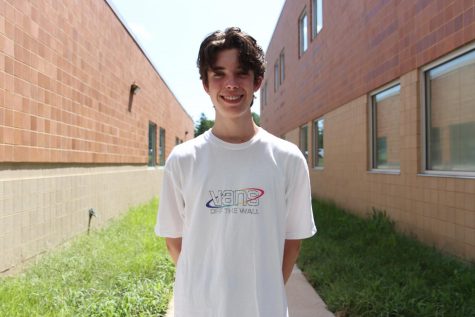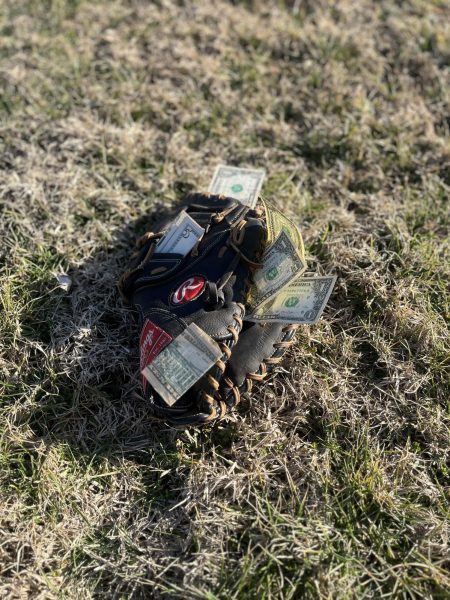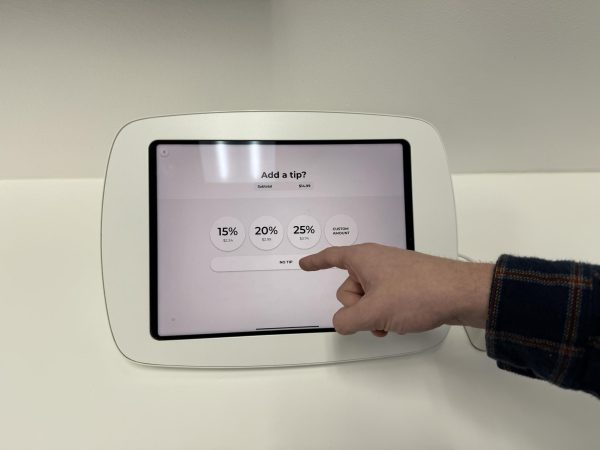Keeping Zoom Cameras On is a Student’s Decision
Media by Mason Kellerman
Technology can be frustrating while using Zoom — especially when students have to keep cameras on.
Virtual learning through Zoom gives students an unaccustomed choice: whether to show their faces in class. And that decision is left up to the student.
In these first few months of online school, I have noticed other classmates and myself tend to keep cameras off for the entirety of the period. Most of my classes have a higher percentage of students with cameras off than on.
The district shows support for the student’s choice in regards to keeping cameras off, but they prefer teachers to be able to see students in class.
Assistant Principal Richard Regina said it is an expectation that MHS students keep cameras on; however, siblings running around at home, having bad hair day or a leak in the ceiling are some exceptions.
“I also struggle with being stuck behind a Zoom screen all day but the best way for teachers to see if students are engaged would be to keep screens on,” said Regina.
Teachers agree with Regina in wanting to make sure their students are attentive in class.
Darcy Hachmeister, AP Calculus teacher, is concerned about her students actively listening in class when their cameras are off. Without physically showing themselves on Zoom, students are given leeway to do a variety of activities unrelated to school: take a nap, scroll through Tik Tok or watch television.
Hachmeister said she prefers seeing student’s faces.
Cameras also enable her to get a better idea of whether students are understanding the course material. She wants to be able to know when clarification or further explanations are needed.
“I want the videos on, so I can see student’s facial reactions and body language,” said Hachmeister.
Cameras on allow for teachers to read the students’ expressions and give them more help when they have a puzzled look; however, virtualing learning has changed the setting in which students receive education resulting in new problems schools have never had to face prior to Covid.
Learning from home can trigger many issues in comparison to learning at school. The residence of a student can reveal multitudes about their private life. By showing peers their home in the background, their standard of life no longer remains private.
Raymond Holmes, language arts teacher, agrees with protecting his students’ private lives.
“Students can protect their privacy better by not broadcasting a feed of their home to their classmates,” he said.
However, Holmes said it is not unreasonable to make students keep cameras on during tests. Screens on allow for more effective involvement in class to ensure students are paying attention.
Even so, I find myself more distracted with cameras on. My attention is focused on staring at myself on the screen. And it is often weird to be able to see my own image in class making me overly precautious. I am contemplating if my hair is out of place, and I worry about doing something embarrassing while all of my peers are watching.
In my experience with Zoom, I have discovered that keeping my camera off has an additional bonus of improved internet connection. I am better able to hear and comprehend lectures due to improved sound quality. Also, my microphone quality is enhanced allowing my questions and answers to be clearly heard.
Along with ongoing internet issues, Covid has done far too much damage itself. In the U.S. alone, the CDC reports that over 200,000 people have died from Covid. The pandemic has cost many lives causing emotions to run high; for that reason, worries about looking presentable for class should not take precedence over mental state.
The teacher’s concerns are valid; nonetheless, students are given the control over their cameras and must utilize them in a responsible way that optimizes their virtual learning experience.
Your donation will support the student journalists of Marquette High School. Your contribution will allow us to purchase equipment and cover our annual website hosting costs. You may become a PATRON by making a donation at one of these levels: White/$30, Green/$50, Blue/$100. Patron names will be published in the print newsmagazine, on the website and once per quarter on our social media accounts.

Lajja Patel (she/her), senior, is the features editor for the Marquette Messenger. This will be her second year on staff. Lajja also is part of the Key...

Mason Kellerman (he/him), senior, is the Illustrator and Web Designer for the Marquette Messenger. This will be his third year on staff. Mason is president...







